Patents
Nightmare Prevention Mattress
Walter Cleasby was granted a UK patent (GB2263399A) in 1995 for his "nightmare prevention mattress."As far as I can tell, Cleasby believed that infant nightmares were caused by physical factors such as a) the hardness of cot mattresses, and b) pressure on a baby's heart from body weight.
His invention addressed these issues by having an inward slope as well as a recess "to protect the main organ of the body, (the Heart,) from excessive pressure."

Posted By: Alex - Fri May 10, 2024 -
Comments (0)
Category: Dreams and Nightmares, Patents, 1990s
Fresh Air Breathing Device
Full patent here.

Posted By: Paul - Tue May 07, 2024 -
Comments (3)
Category: Body, Inventions, Patents, Firefighting, Arson, Wildfires, Infernos and Other Conflagrations, Danger, Risk, and Peril, Excrement
Device to self-administer gas
This curious device was featured in Mechanix Illustrated (July 1938), but no info was given about the inventor.
So I searched the patent archive. This patent granted to Justin Sholes in 1939 seems to be it:
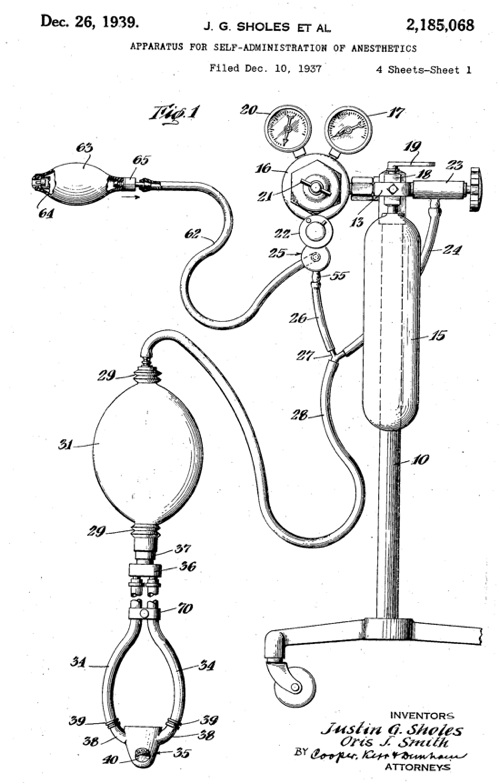
Posted By: Alex - Thu Apr 25, 2024 -
Comments (2)
Category: Drugs, Patents, 1930s
Trick Gun for Secret Society Initiations
Imagine the sheer delight of the person being initiated, when the realistic looking gun is pointed at them, a loud explosion occurs--but only water emerges! High-larious!Full patent here.
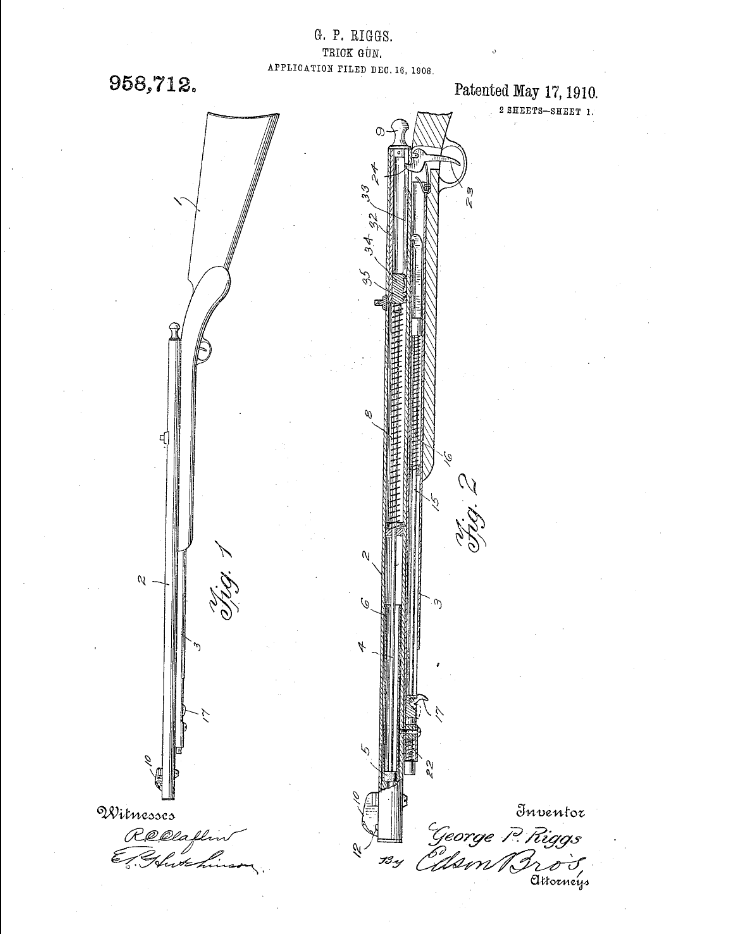
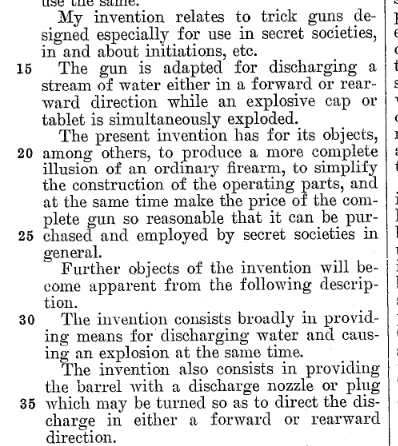
Posted By: Paul - Wed Apr 24, 2024 -
Comments (1)
Category: Clubs, Fraternities and Other Self-selecting Organizations, Guns, Patents, 1900s, Pranks
French Fry Injector
Why slather your fires with ketchup or cheese or mayo like a peasant, when you could laboriously inject the condiment into each individual fry?Full patent here.


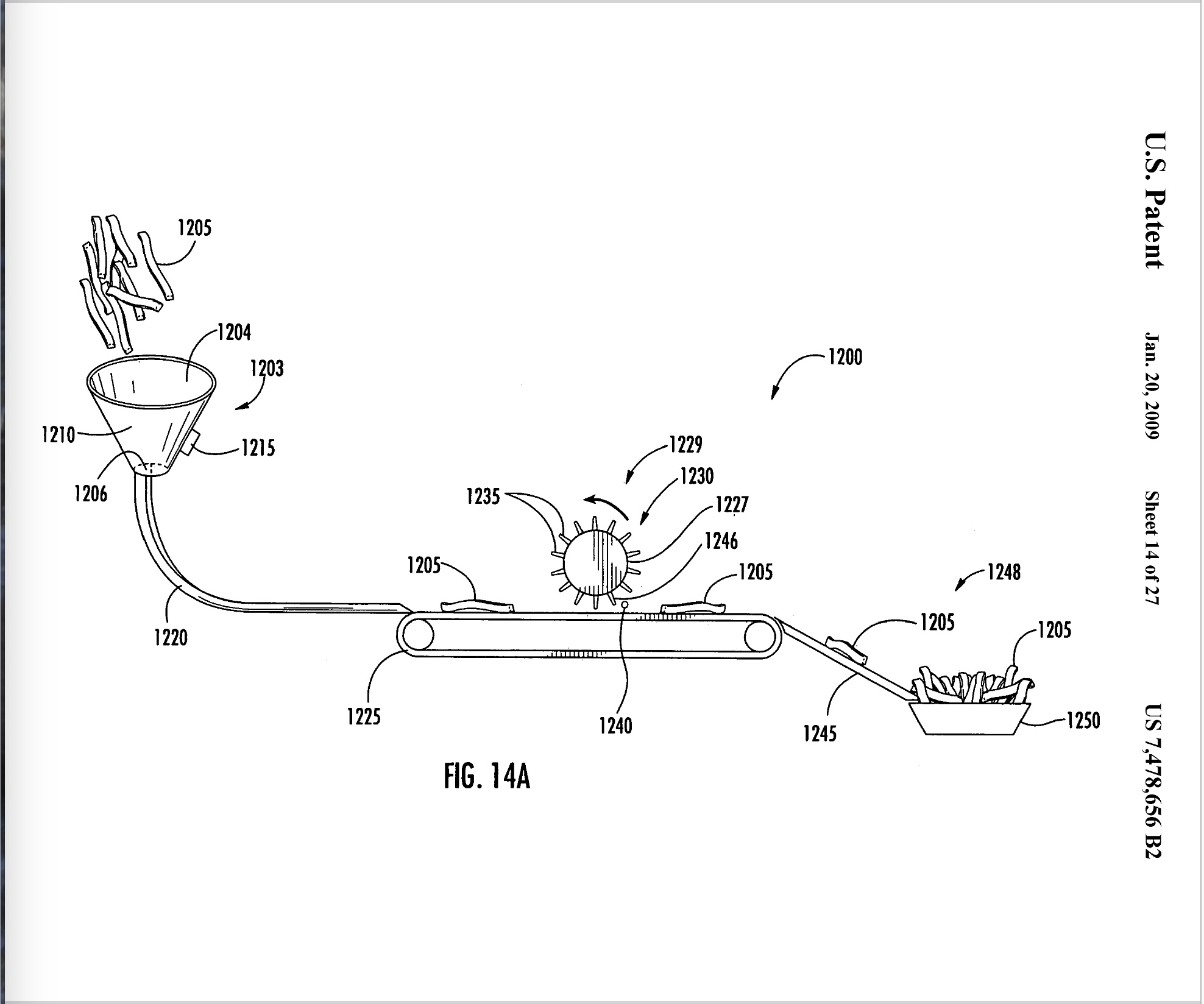
Posted By: Paul - Fri Apr 19, 2024 -
Comments (0)
Category: Excess, Overkill, Hyperbole and Too Much Is Not Enough, Inventions, Patents, Junk Food, Twenty-first Century
Multi-dimensional rotating chess
Recently patented by Craig Wallace Coulter. Patent No. 11,896,913.
Posted By: Alex - Mon Apr 15, 2024 -
Comments (1)
Category: Games, Patents
Trick Chair
Bang! And down goes the victim!Full patent here.
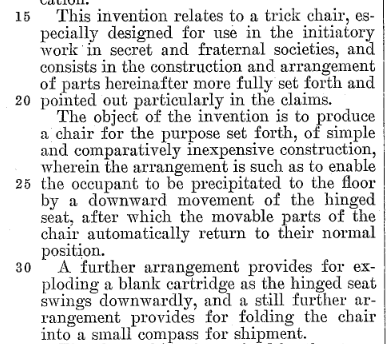
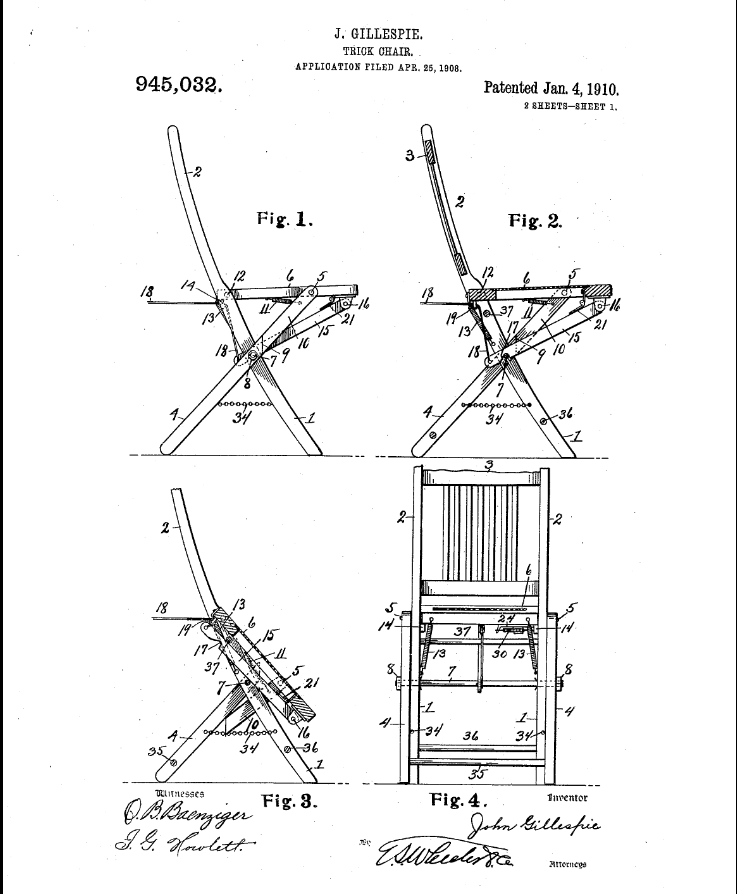
Posted By: Paul - Tue Apr 09, 2024 -
Comments (2)
Category: Clubs, Fraternities and Other Self-selecting Organizations, Patents, 1900s, Pranks
Ornamental Ash Tray
The entire patent, figure and text, is given below. How I wish the inventor had gone on at length about his design.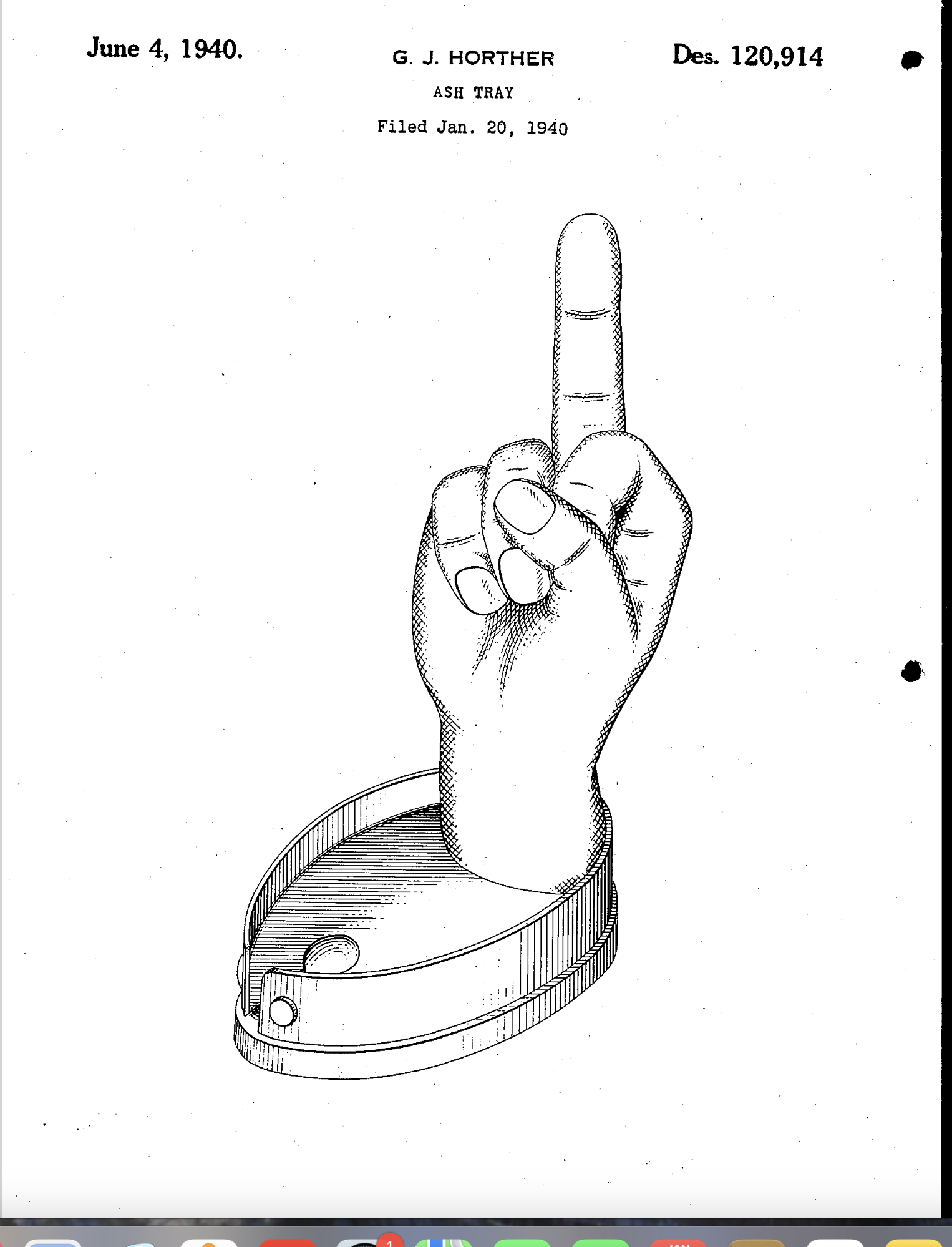
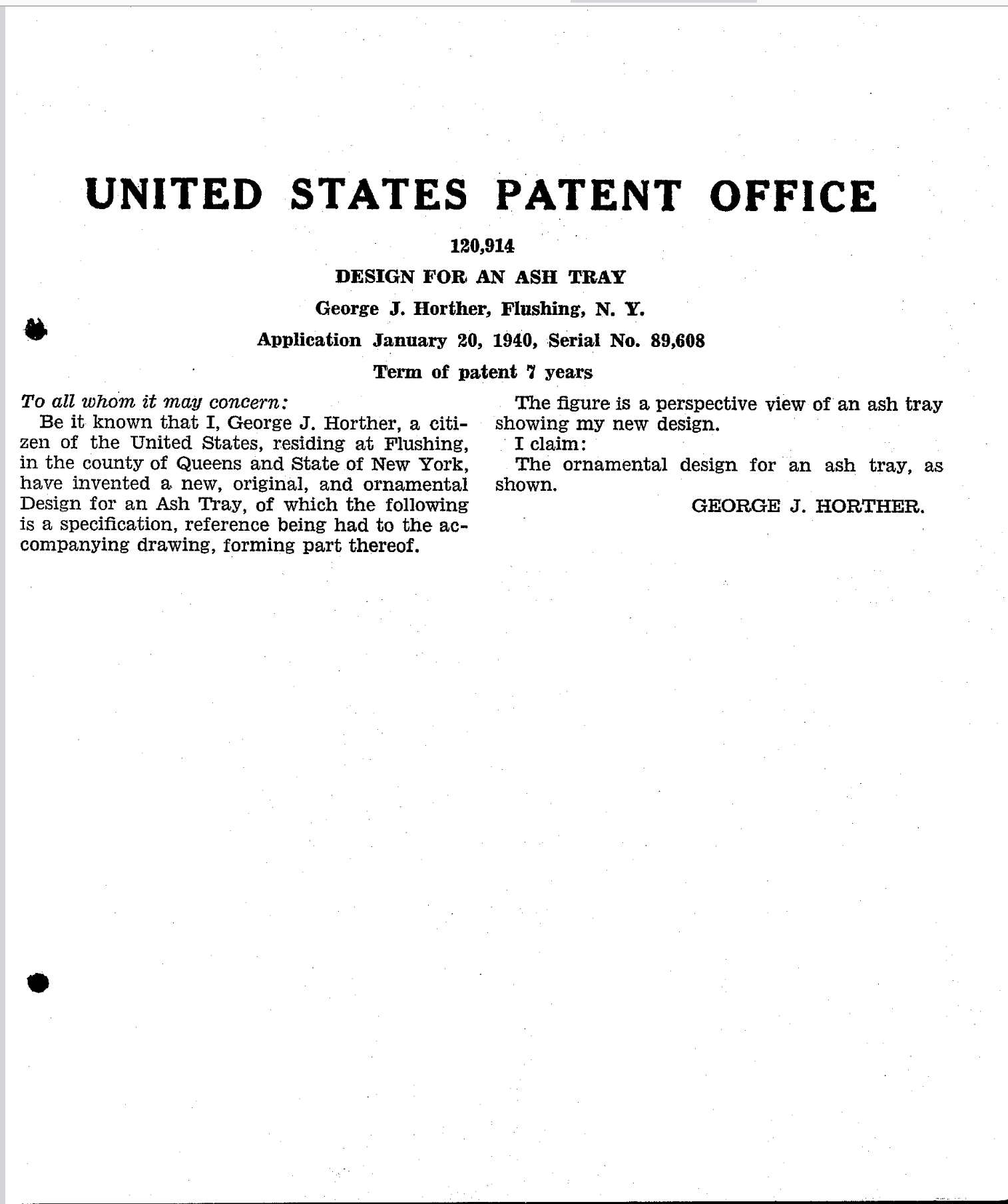
Posted By: Paul - Fri Apr 05, 2024 -
Comments (0)
Category: Obscenity, Patents, Smoking and Tobacco, 1940s
Defecation relief unit for aeroplane personnel
How do fighter pilots poop while in the air? I think the answer is that they try very hard not to, because if they have to go, they're going in their flight suit. Back in the 1950s Constantin Paul Lent, et al., tried to come up with an alternative. From their patent (No. 2,749,558):Comparatively speaking it is an easy matter to provide adequate latrines for the men in the forces on land and sea. When the time comes to eliminate, one just walks to the nearest comfort station. But in the Air Force the problem of elimination can not be always solved that easily especially by aviation pilots...
The applicants are cognizant that there are relief tubes provided on most all jet planes for urinating, but no single seat aircraft is equipped with a safe and sure means for defecation. When the pilot of the jet, due to accident or enemy action needs to eliminate, the problem of defecation becomes acute. The pilot must wait until he lands his craft; and quite often he must remain aloft for a considerable length of time before he has a chance to visit a comfort station on the ground. In many cases due to the physiological and psychological effects produced on the pilot by enemy action, he is forced to eliminate even before he has a chance to land his plane.


Posted By: Alex - Sun Mar 24, 2024 -
Comments (0)
Category: Flight, Patents, Excrement, Air Travel and Airlines, 1950s
Smoking Facts
Seemed odd to me that the ad would not only mention that they've got "a patent on flavor," but also give the patent number (3828800). So I had to look it up. Turned out to be a fairly boring patent for "an improved cigarette filter material... formed from the porous, granular salt of a weakly basic anion exchange resin."
Sports Illustrated - Nov 14, 1977

Coos Bay World - Nov 4, 1978
Posted By: Alex - Wed Mar 13, 2024 -
Comments (0)
Category: Advertising, Patents, Smoking and Tobacco, 1970s, Billboards

| Who We Are |
|---|
| Alex Boese Alex is the creator and curator of the Museum of Hoaxes. He's also the author of various weird, non-fiction, science-themed books such as Elephants on Acid and Psychedelic Apes. Paul Di Filippo Paul has been paid to put weird ideas into fictional form for over thirty years, in his career as a noted science fiction writer. He has recently begun blogging on many curious topics with three fellow writers at The Inferior 4+1. Contact Us |




